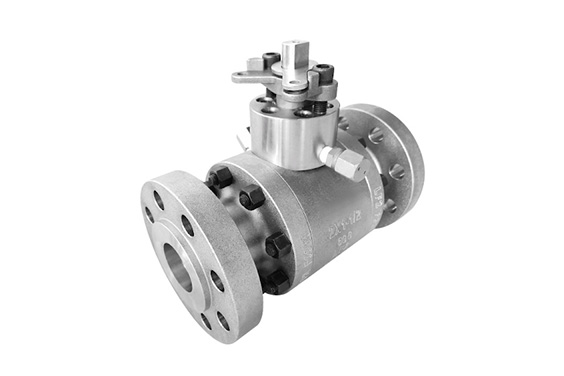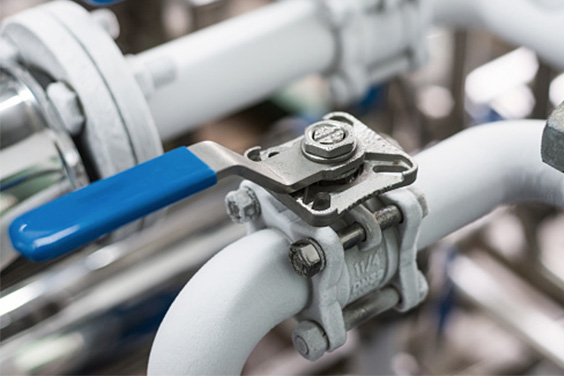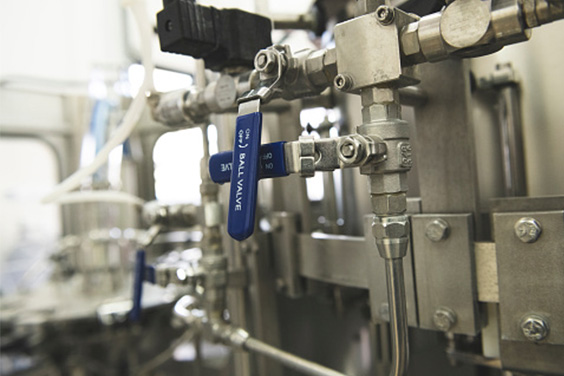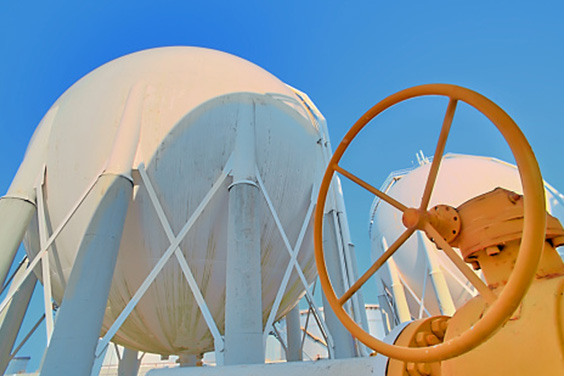Ball valves are one of the world’s most widely used types of valves. They are suitable for a wide range of applications, from heavy-duty industrial use to household plumbing. There are two main types of ball valves: floating ball valves and trunnion ball valves. Both types have their own unique features and benefits. But what’s the difference between these two types of valves? This blog post will explore the trunnion mounted ball valve vs. floating ball valves.
What Are Floating Ball Valves?

As the name suggests, floating ball valves have a ball that flows inside the body of the valve. The ball is connected to the stem, which is operated by a handle. The ball is connected to a lever that opens and closes the valve. Floating ball valves are used in a variety of industries, such as oil and gas, chemical processing, and water treatment.
Floating ball valves are often used in applications with a high degree of accuracy. The ball in a floating ball valve is free to move up and down, which allows it to create a tight seal. This makes floating ball valves ideal for applications where a small amount of leakage is acceptable.
Floating ball valves are available in various materials, such as brass, stainless steel, and plastic. The material chosen will depend on the application in which the valve will be used. For example, a plastic floating ball valve would be best suited for an acidic environment, while a brass ball valve would be best for a high-temperature application.
How Does a Floating Ball Valve Work?
A floating ball valve is a type of valve that uses a ball that floats on top of a liquid to control the flow of the liquid. The ball is connected to a lever that can be used to open and close the valve. When the valve is open, the ball floats, allowing the liquid to flow. When the valve is completed, the ball sinks and blocks the flow of the liquid.
Pros And Cons Of A Floating Ball Valve
A floating ball valve is often used in various industrial and commercial applications. The ball in this type of valve is designed to float on top of the fluid, which allows for a tight seal while also using minimal force. While floating ball valves have many benefits, there are also a few drawbacks.
PROS
- It can be used with various fluids
- Easy to operate
- Good for tight spaces
- Low maintenance
CONS
- Some fluids can cause the ball to stick
- It can be difficult to repair
- Not suitable for high-pressure applications
Whether or not a floating ball valve is suitable for the business will depend on the specific needs. However, it is essential to be aware of both the pros and cons of this type of valve before making a decision.
What Are Trunnion Ball Valves?

A trunnion ball valve is a type of valve that uses a ball held in place by two trunnions or posts. This design allows the ball to rotate in place, allowing the valve to open or close. This ball valve is a specialized type of valve that is used in a variety of industries. These valves are designed to provide superior performance in critical applications. Trunnion ball valves are available in various sizes and pressure ratings to suit the needs of different industries.
Some industries that commonly use trunnion ball valves include the oil and gas industry, the power generation industry, and the chemical processing industry. These valves are also widely used in applications where there is a need for a high-quality valve that can withstand extreme temperatures and pressures.
How Does a Trunnion Ball Valve Work?
Trunnion ball valves are designed for high-pressure and heavy-duty applications. They are available in a variety of sizes and configurations to meet the needs of different industries. But how does a trunnion ball valve work?
Trunnion ball valves have a two-piece body design that contains a ball with a hole through the center. The ball is attached to a trunnion, a support that allows the ball to rotate. The trunnion is connected to the valve’s body and is held in place by bearings.
When the valve is in the open position, the hole in the ball’s center aligns with the valve’s inlet and outlet ports. This allows fluid to flow through the valve. When the valve is in the closed position, the ball is rotated so that the hole is no longer aligned with the ports, and fluid flow is blocked. Trunnion ball valves are used in applications where it is crucial to minimize or eliminate the risk of leaks.
Pros And Cons Of A Trunnion Ball Valve
Trunnion ball valves are one of the most popular types of valves on the market today. They are used in a wide variety of industries and applications, from oil and gas to water and wastewater. But what are the pros and cons of trunnion ball valves? Let’s take a look.
PROS:
- Trunnion ball valves are very sturdy and can withstand high pressure.
- They are easy to operate and can be opened and closed quickly.
- Trunnion ball valves have a good seal and can be used with a variety of different liquids and gasses.
CONS:
- Trunnion ball valves can be expensive.
- They can be challenging to repair if they break.
- Trunnion ball valves can be large and bulky, making them difficult to install in some applications.
Key Differences Between Floating Ball Valves And Trunnion Ball Valves

Floating ball valves and trunnion ball valves are both types of ball valves. Ball valves are valves that use a ball to control the flow of fluid. The ball has a hole in the center that allows fluid to pass through when the valve opens. When the valve is closed, the ball is turned, so the hole is blocked, and fluid cannot pass through.
So, what are the critical differences between a trunnion valve vs floating valve? The main difference is in the design of the ball. In a floating ball valve, the ball is free to float within the body of the valve. This allows the ball to align with the seat, creating a tight seal. In a trunnion ball valve, the ball is attached to a trunnion, which is a short, cylindrical piece of metal. The trunnion supports the ball as a fulcrum to pivot on. This advantage is that it strengthens the valve and can prevent the ball from breaking or deforming under high pressures.
Floating ball valves have a lower risk of leakage and are easier to maintain than trunnion ball valves. They are also less expensive. On the other hand, trunnion ball valves have superior flow characteristics and can handle higher pressures.
Floating Ball Vs. Trunnion Mounted Ball Valve: Which One Is Best To Choose?

There are many factors to consider when choosing between a trunnion mounted vs floating ball valve. Both have advantages and disadvantages, so the right choice for needs will depend on various factors. To help make the best decision, we’ve prepared a quick overview of these two types of floating ball vs trunnion mounted ball valve.
.
- Floating ball valves have a ball that floats on a seat, which gives it lower risk of damage from friction. Trunnion-mounted ball valves have a ball attached to a trunnion, providing it with a higher level of durability.
- Floating ball valves are typically less expensive than trunnion mounted ball valves. Trunnion-mounted ball valves are often used in heavy-duty applications because of their durability.
- Floating ball valves can be used in a wide variety of applications such as chemical processing and water treatment. Trunnion-mounted ball valves are typically used in oil and gas pipelines, power plants, and chemical plants.
Bottomline
In conclusion, there are a few keys to trunnion ball valve vs floating ball valve. Trunnion ball valves have a higher pressure rating and are therefore better suited for high-pressure applications. Floating ball valves are less likely to leak, making them a better choice for applications where leaks are a concern. Both valves have advantages and disadvantages, so selecting the correct type of industrial valve manufacturer for the specific application is essential. Looking for trunnion ball valve manufacturers? Contact Dombor to know more details now!









